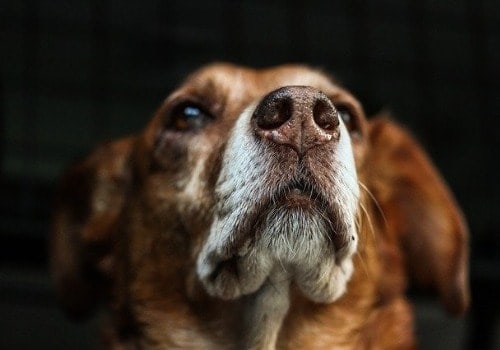Commercial dog food is mighty convenient and, to an unrefined canine palate, an irresistible delicacy.
That kibble comes in so many shapes, colors and flavors. Add in that satisfying crunch and you’ve got a truly addictive meal.
But store-bought dog food isn’t always what’s best for your dog. In some cases, homemade food is the healthiest option.
Dogs with special dietary needs and medical conditions may not get all the nutrition they need from dog kibble.
Older dogs may have difficulty chewing the hard morsels of food.
Working dogs may need more calories and nutrition than store-bought food can provide.
And some folks argue that homemade dog food is simply closer to what a dog would eat in the wild. The combination of nutrients and texture can improve dental health, boost energy levels and make for a healthier dog.
One of the best ways to get started feeding your dog homemade food is by boiling chicken. Boiled chicken makes a fantastic base for all kinds of home-cooked dog food, and even if it’s not his main diet, your dog will love it as a snack.
We’ve got the scoop on how and why to boil chicken for dogs. Read on — you may even end up wanting some for yourself!
Why Should Dogs Eat Boiled Chicken?

It sounds bland and unappealing, the kind of thing you’d only eat if nothing else could be kept down.
But to dogs, chicken is gourmet and healthy.
Boiled Chicken for Dogs with Stomach Problems
When we’re sick, our go-to meal is chicken noodle soup. It’s not the most flavorful thing out there, but it’s still pretty tasty and, more importantly, easy on the stomach.
Queasiness, nausea, vomiting, and diarrhea are exacerbated by many foods, but not boiled chicken. And that’s true of both humans and dogs.
Many vets recommend feeding boiled chicken to dogs with stomach issues, be they temporary or chronic. It provides the protein, vitamins and minerals they need to recover without the risk of further stomach upset.
Whether your dog’s stomach issues are caused by a short-lived virus or a long-term condition like chronic pancreatitis or colitis, boiled chicken provides relief.
Boiled Chicken for Picky Dogs

Some dogs will eat just about anything, but others refuse to eat unless their food is absolutely perfect.
If your dog falls into the latter category, chances are you’ve had a tough time getting him to eat commercial kibble. No brand seems to satisfy his very particular tastes.
It’s frustrating at first, but that frustration quickly turns to worry. A dog that won’t eat will experience weight loss, low energy, mood problems and malnutrition — none of which we want for our pets.
Thankfully, boiled chicken is like kryptonite for even the pickiest dogs.
You’ll be hard-pressed to find a canine who’s not interested in devouring a bowl of boiled chicken. It’s just that good — dog food in its purest form.
Boiled Chicken for Any Dog
All it takes is one look at the news to get concerned about commercial dog food.
Since 2009, over 220 dog food recalls have been issued, many for salmonella, listeria and other serious contamination. These include both expensive and cheap foods, organic and non-organic — it can happen to any brand.
That’s a big part of why homemade dog food has become so popular. If commercial brands can’t be trusted to keep their foods safe for dogs, many owners would rather make their own.
Chicken is inexpensive, easy to find and loved by dogs. So it’s an ideal base for homemade dog food, regardless of whether your dog has health problems or not.
And boiled chicken in particular is easy and quick to prepare. This makes it perfect for busy owners who still want their dogs to have healthy and delicious homemade food.
Why Boil Chicken for Dogs? What About Other Cooking Methods?

Fried, grilled, baked… we humans love chicken regardless of how it’s prepared.
But boiling will rarely make anyone’s list of favorite chicken cooking methods. It doesn’t impart any of the flavors or textures of other methods, instead giving an overall impression of blandness.
So why should we boil our dogs’ chicken? Are other types of cooked chicken safe for dogs?
Boiled Chicken Is Easier
Grilled and fried chicken may be delicious, but they do require a little more involvement on the chef’s part. They need to be tended to throughout the cooking process, reducing your ability to prep other dog food ingredients at the same time.
But boiled chicken couldn’t be easier. Just chop it up and plop it into the pot — the boiling water does the rest!
Boiled Chicken Is Faster

Dogs can eat baked or roasted chicken, but many owners don’t prepare it regularly. The reason for that is simple: oven cooking takes a lot longer than stovetop cooking.
Between prep, preheating, and cooking, baked or roasted chicken can take well over an hour to get ready. That’s a tall order for many dog owners, who also need to prepare meals for their human families.
Boiled chicken, on the other hand, takes significantly less time. And many dogs seem to like it better than baked chicken, anyway — win-win!
Boiled Chicken Is Healthier
Many methods of cooking chicken involve added oils or fats of some sort. This is especially true of fried chicken, which needs a ton of oil in order to achieve that crispy texture.
But that extra fat is bad for dogs (and for us, too, but that’s another issue altogether). It upsets their stomachs, leading to diarrhea, vomiting, stomach pain and other unpleasant symptoms.
And fed over the long term, fatty foods can cause heart disease and other problems in dogs.
Boiled chicken requires no extra fat — or extra anything, for that matter. It’s the healthiest way to prepare chicken for dogs.
How Do I Boil Chicken for Dogs?
So you’re sold on making boiled chicken for your dog. Now it’s time to actually do it!
Choosing Chicken for Dogs

When purchasing chicken for dogs, go with chicken breasts if possible. These are the leanest cuts of chicken, plus they’re widely available and inexpensive.
Skinless, boneless breasts are best. If you get ones with skin and/or bones, you’ll need to remove them thoroughly before cooking the chicken.
Removing all bones and bone fragments is especially important as these can get stuck in a dog’s GI tract, causing pain, bleeding and infection.
Chicken thighs are often cheaper by the pound, but may actually be less cost-effective once prepared. That’s because you’ll need to remove the extra fat from the chicken before cooking it, and chicken thighs are often loaded with fat.
Preparing and Boiling the Chicken
Preparing boiled chicken for your dog couldn’t be easier.
If the chicken is frozen, fully defrost it in the fridge. This may take up to a day, but quicker defrosting methods should not be used as they increase the risk of the chicken spoiling.
Once defrosted, place the chicken in a uniform layer at the bottom of a pot. The pieces of chicken shouldn’t overlap with each other.
Then fill the pot with water until the chicken is completely covered. Leave at least two inches between the waterline and the top of the pot to avoid a boilover.
Cover the pot and boil the chicken over high heat for around 12 minutes. This should be sufficient to cook three average-sized chicken breasts, but you may need more or less time depending on your stove and chicken cuts.
Remove a breast from the water and cut it open to check for doneness. There should be no pink or gummy parts remaining; if there are, keep boiling the chicken until it’s fully cooked.
Once the chicken is cooked all the way through, remove it from the water. You can then shred it with a fork or cut it into small chunks.
Let the chicken cool for 15 minutes before feeding it to your dog. It’ll keep in the fridge for up to 4 days.

The dogsandtreats.com website is one of the best we have found, and the DIY Doggy Delicacies: How to Boil Chicken for Dogs article is very well written and useful!
Thanks and kisses! :)
Awesome! No words. You always go one step beyond.
Thanks again :)